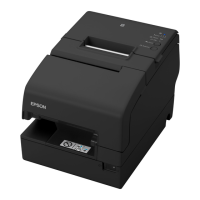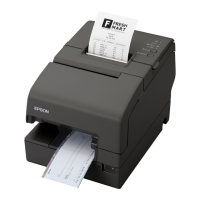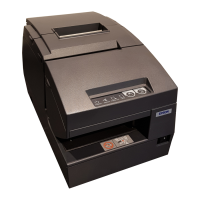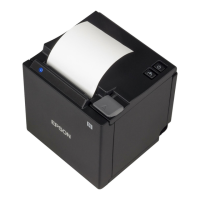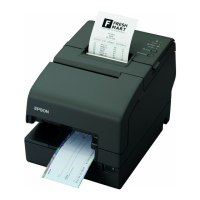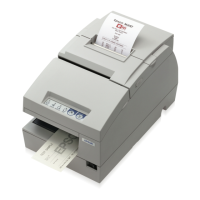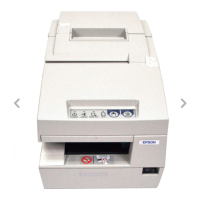CONFIDENTIAL
SHEET
20
NO.
SHEET
REVISION
E
TITLE
NEXT
21
TM-H5000
II
IIII
II
series
Specification
(STANDARD)
2.1.1.3 Interface connector terminal assignments and signal functions
Interface connector terminal assignments and signal functions are described in Table 2.1.1.
Table 2.1.1 TM-H5000
II
IIII
II
series Printer Status and Signals
Pin No. Signal name Signal direction Function
1 FG — Frame ground
2 TXD Output Transmit data
3 RXD Input Receive data
4 RTS Output DIP SW 2-2 OFF: Same as DTR signal (Pin 20)
DIP SW 2-2 ON: Logical product of DTR signals of DM-D and
TM (If both are SPACE, the printer can
receive data (SPACE).)
6 DSR Input This signal indicates whether the host computer can receive
data.
SPACE indicates that the host computer can receive data, and
MARK indicates that the host computer cannot receive data.
When DTR/DSR control is selected, the printer transmits data
after confirming this signal (except when transmitting data by
DLE EOT
,
and
GS a
).
When XON/XOFF control is selected, the printer does not check
this signal.
Changing the DIP switch setting enables this signal to be used
as a reset signal for the printer (refer to Section 3.3.3).
The printer is reset when the signal remains MARK for
1 ms or more.
7 SG — Signal ground
20 DTR Output 1) When DTR/DSR control is selected, this signal indicates
whether the printer is busy. SPACE indicates that the printer
is ready to receive data, and MARK indicates that the printer
is busy. The busy condition can be changed by using DIP
SW 2-1 as follows (refer to Section 3.3.3):
DIP SW 2-1 status
Printer status ON OFF
1. During the period from when the power is turned
on (including resetting using the interface) to
when the printer is ready to receive data.
BUSY BUSY
2. During the self-test.
BUSY BUSY
3. When the cover is open.
—BUSY
4. During paper feeding using the paper feed
switch.
—BUSY
5. When the printer stops printing due to a paper-
end. (only when the paper roll is not present)
—BUSY
6. During macro executing standby states.
—BUSY
7. When an error has occurred.
—BUSY
8. When the receive buffer becomes full.(*1)
BUSY BUSY
OFF-line
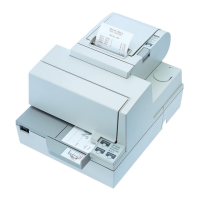
